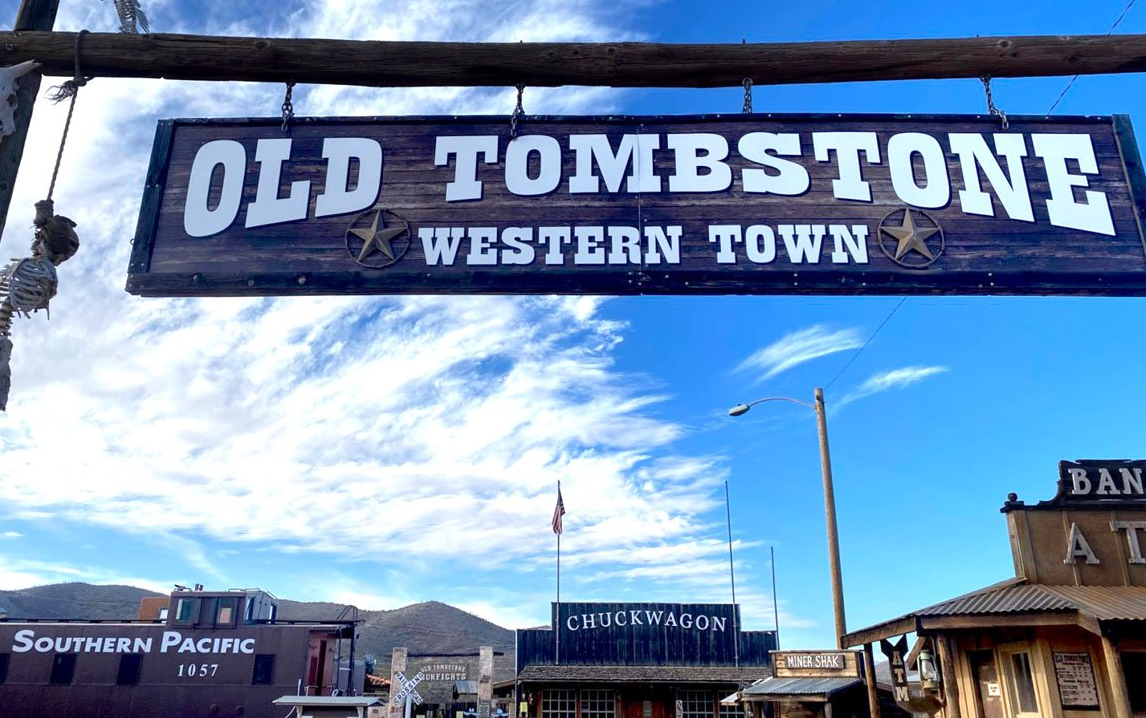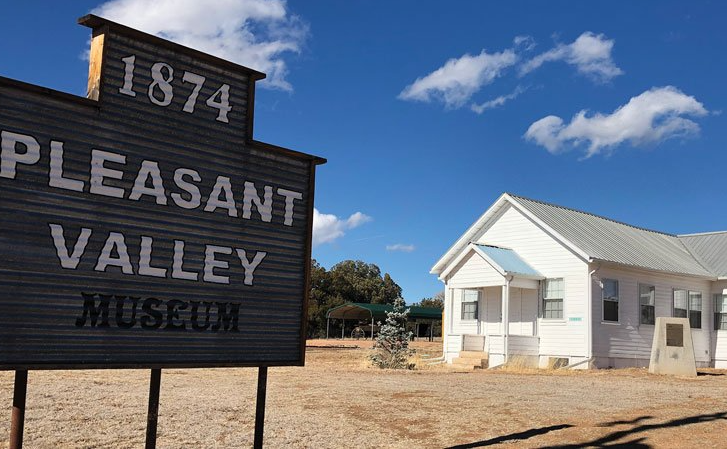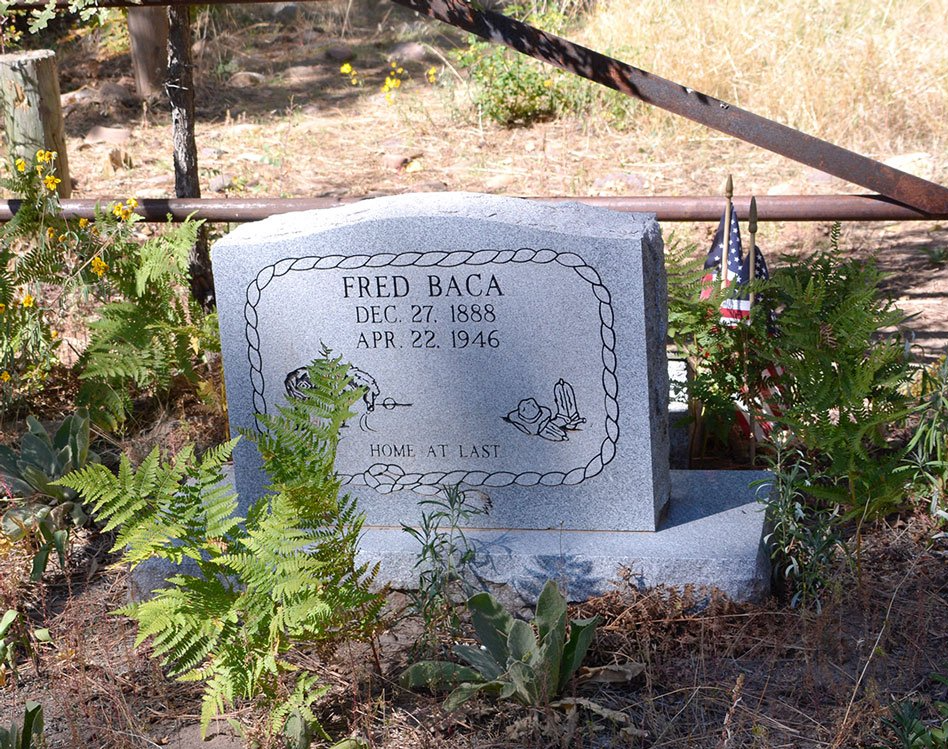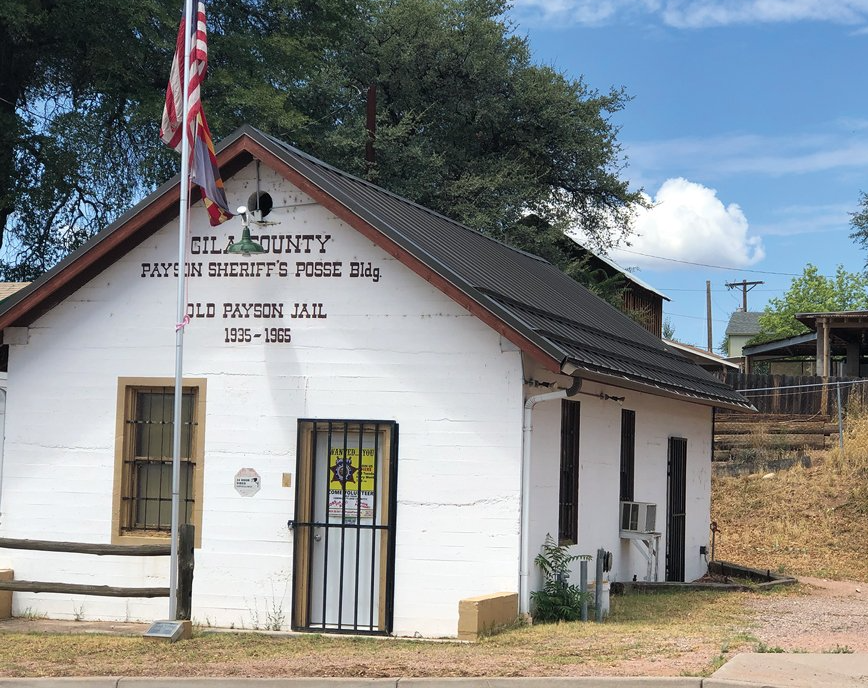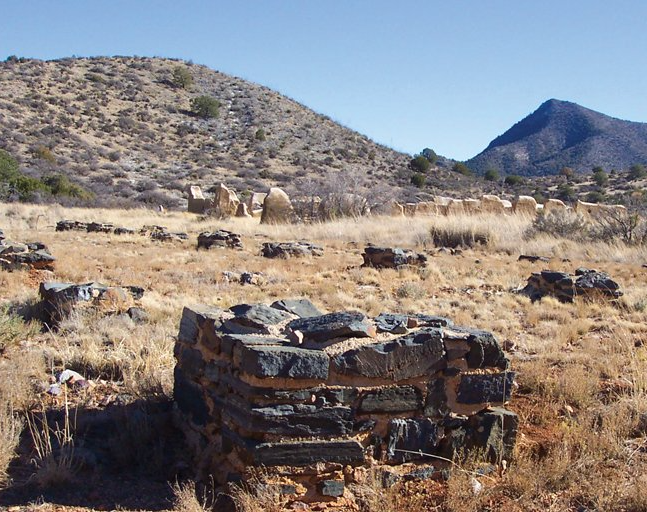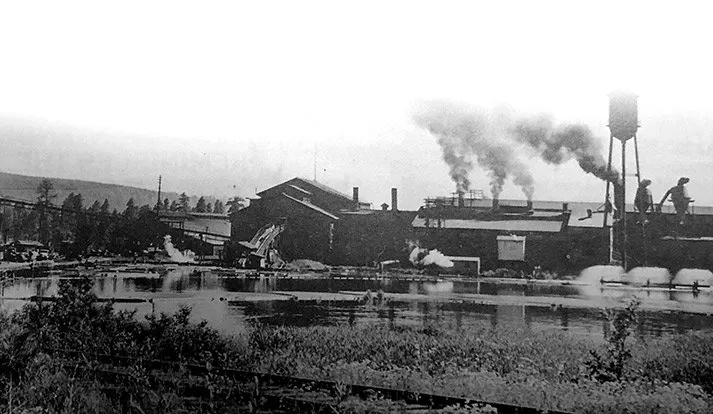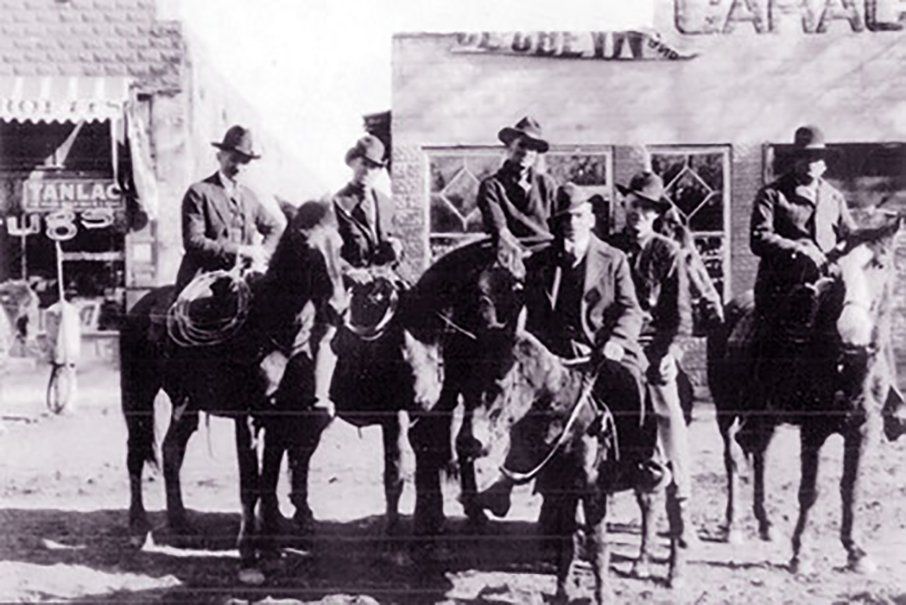HISTORY
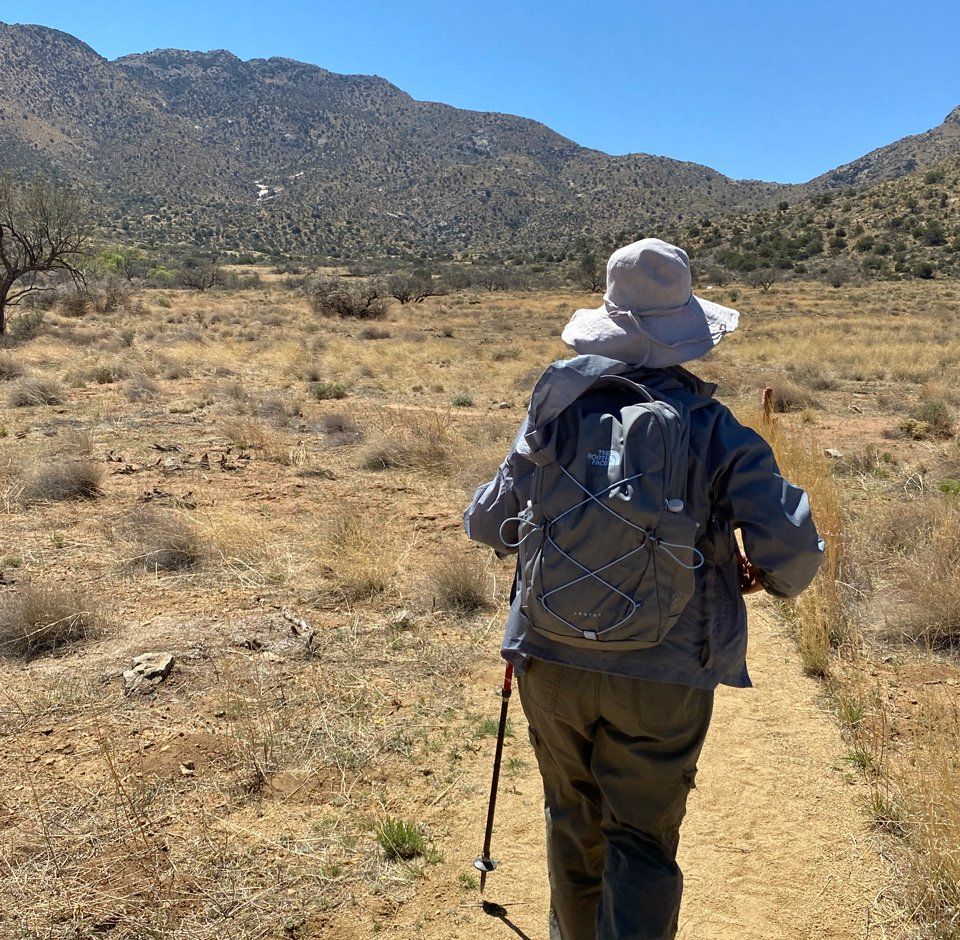
The Trail to Historic Old Fort Bowie
By Annemarie Eveland
In Southern Arizona, between the massive Chiricahua Mountains and the rugged Dos Cabezas Mountains, there is a low divide that, in the 1800s, supplied a very dependable water source. These springs made this Apache Pass an essential traveling direction for obtaining necessary water for prospectors, soldiers, and travelers who flocked into the Chiricahua Apache Homeland. The pass was named Puerto del Dado (the Pass of Chance) by the Spaniards, and some called it Puerto de la Muerte (the Pass of Death), because of the risk of encountering raiding Apache warriors. (photo of Apache Springs) Read More
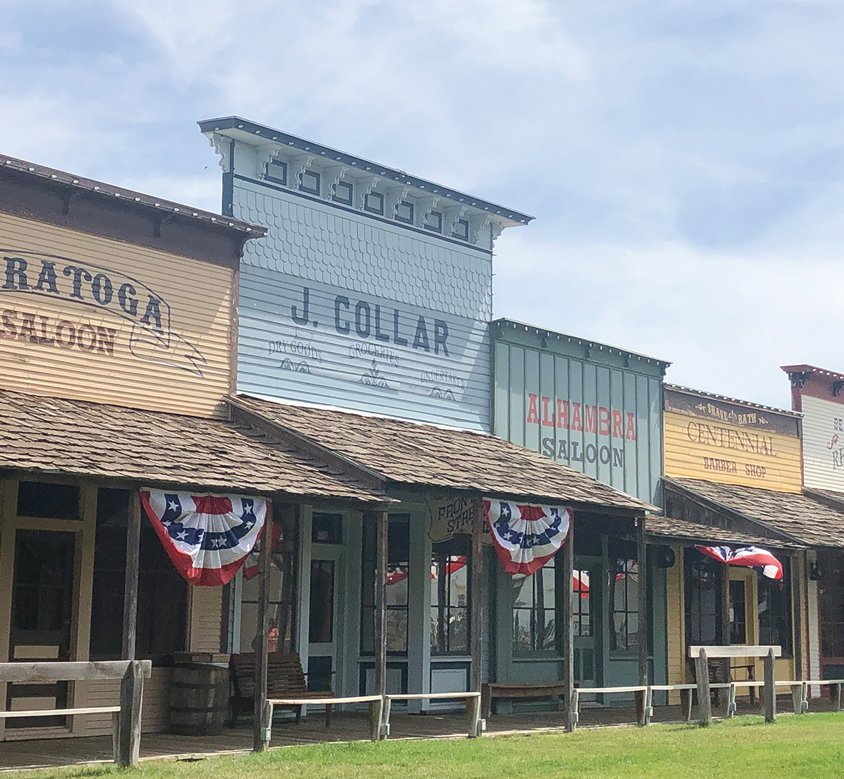
DODGE CITY, KANSAS +. TOMBSTONE, AZ =
THE WILD, WILD, WILD WEST
BY Sherry E Engler
His cold, gritty stare at his foe invites danger as he holds his hand slightly on top of the gun butt slung in the worn leather holster at his hip. His unkempt appearance from his worn-out cowboy hat down to his black boots sporting large silver spurs gives him an ominous presence. Being accused of being a rowdy drunk ruffian in the saloon has provoked other customers to toss him through the swinging saloon doors out onto the dirt street. Saloon girls, cattle pokes, and others watch in earnest as the desperado seems determined to settle the brawl with his Read More

DeGrazia
The Myth and the man who lived them
By Annemarie Eveland
Who was DeGrazia? His birth name was “Ettorino” (little Ettore) which means in Italian/Old Greek “to restrain,” or “to defend, hold fast, be steadfast.” It was wise to name him that, for his life would need such strength and devotion to his purpose.
He was born in the small mining town of Morenci, and in his family, the men worked in the mines. His family migrated from Italy and worked very hard to raise their seven children. When the mines played out, they went back to Italy for five years. As Morenci mines activated again, they returned.
As a young boy, he first painted Indian faces, learned the Apache language, and Read More
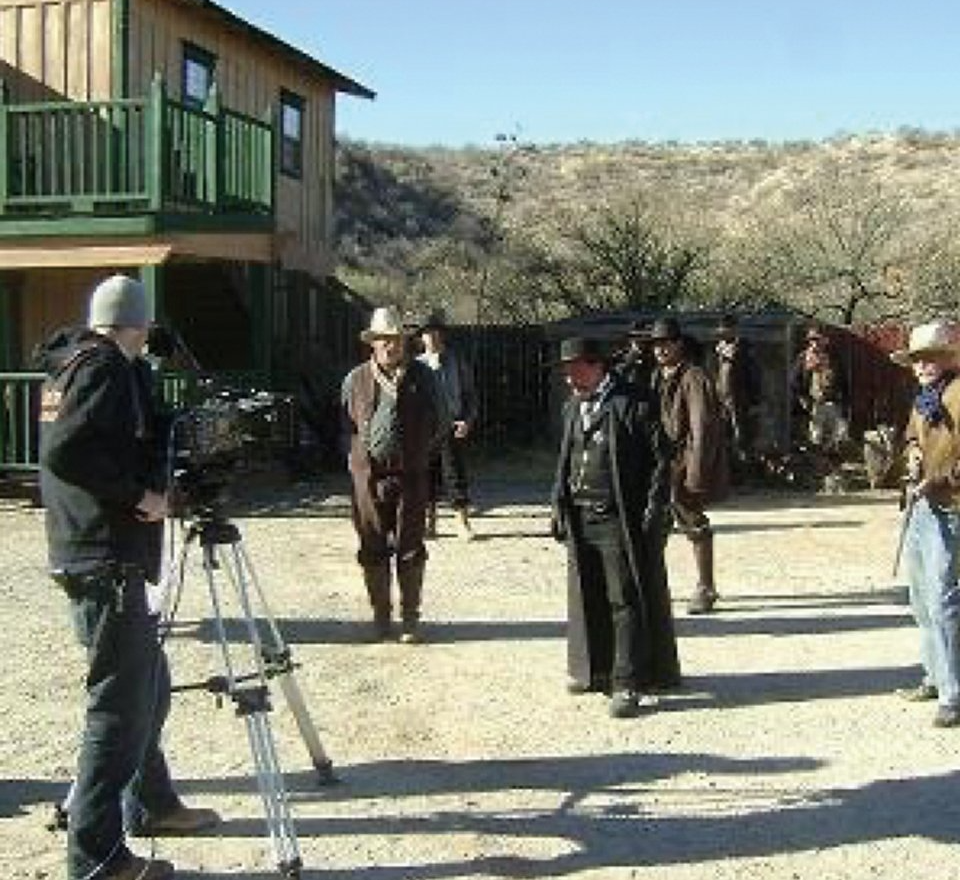
Take-Two! You’re
in the Movies
Part I
By Annemarie Eveland
It was just bare land when her husband, John Ashley Gammon, found it in 1972 in Benson, Arizona. He had turned off Highway 10 for 3 miles then onto Pomerene Rd. and followed some twists and turns for seven miles, reaching Rock Springs Road and the land (what would later be called Gammons Gulch Movie Set.)
I sat down with Joanne to learn about their dream come true. John had first met Joanne, his bride-to-be, at a reenactment group activity in Benson. She thought Jay
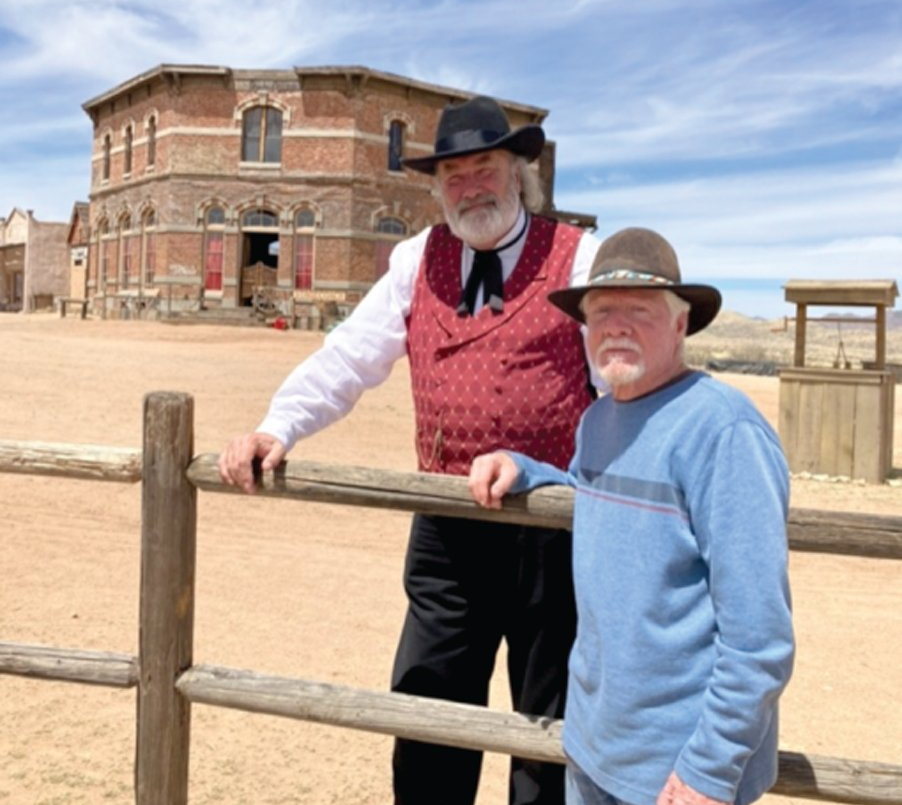
Mescal Makes Memories
Part II
Photos and text by Annemarie Eveland
Mescal was a small town in Arizona before it got its new life as Mescal Movie Set in Benson, AZ. The name itself “mescal” (according to my research) is a Spanish word for “century plant.” In Arizona, we see these plants growing for many years, then they burst into spectacular bloom, and then they die. But Mescal Movie Set is very much alive and well.
I read that in 1885, in the area of Mescal, Arizona, (Cochise County) two companies of colored troops were stationed to furnish escort to travelers. But let’s get back to the
Read More
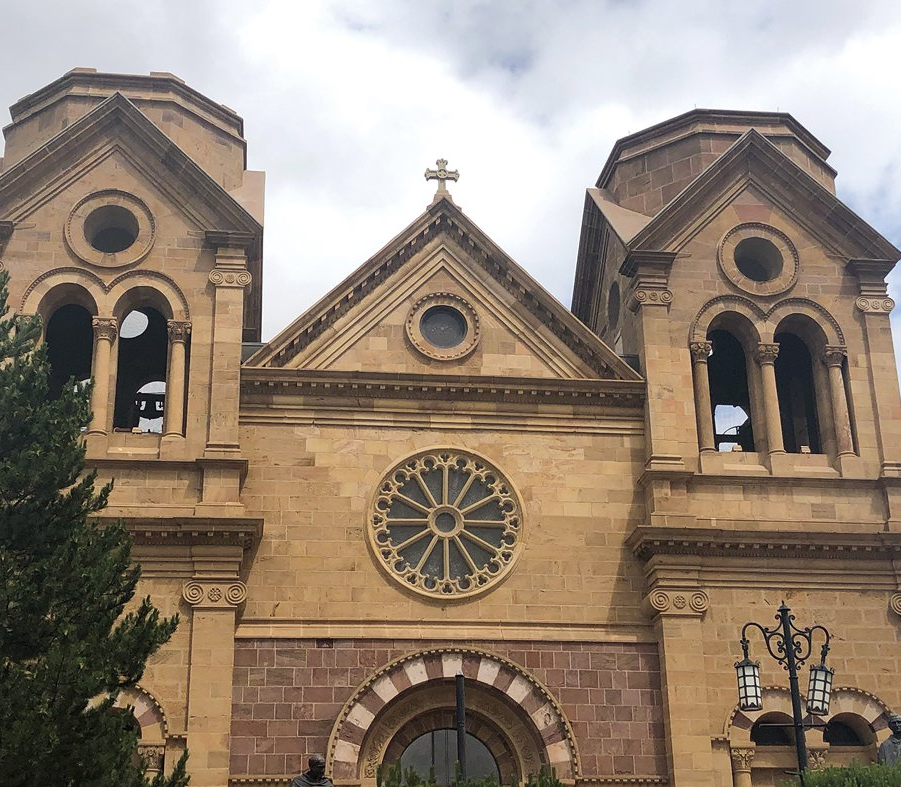
The Oldest Capital
in the United States
By: Sherry E Engler
Unique and remarkably vibrant, Santa Fe, New Mexico is the oldest capital in the United States. Santa Fe has claimed the title of Capital for over four hundred years; spanning the conflicts of many peoples, cultures, and legacies; for it is truly a city of intrigue, historical struggles, and art heritages. One of a kind, one of the nicknames for Santa Fe through the years is “The City Different.”
And different, she is! Perhaps, it was the Rio Grande River that enticed the first inhabitants to this land of enchantment

Zane Grey:
The Man & The Myth
By Annemarie Eveland
Photos courtesy of
Northern Gila County Historical Society
Often, I have glanced from my home window over Green Valley Lake to the reconstructed home of Zane Grey and even taken a tour of his “cabin.” But recently when I began to investigate who this man was through interviews, articles, and a book of his biography, I became aware that he was a very complicated person, and his lifestyle was different from the norm of his time. I stitched together pieces of what this famous man may have been through

Listening Through History
Whispers of the Past
Photos and text by Carol Godwin
Sitting atop one of the many rocky outcroppings overlooking one of the rugged canyons in the Vernon area, many people might feel alone in the solitude that hiking and exploring the seemingly remote and trail-less canyons and draws surrounding Vernon provides, but I feel, more than hear, the whispers from the past and wavering shadows of the peoples who came before me.
At first, the silence is an almost electric feeling of the absence of sound and then as I wait, still and quiet, I begin to hear small... Read More
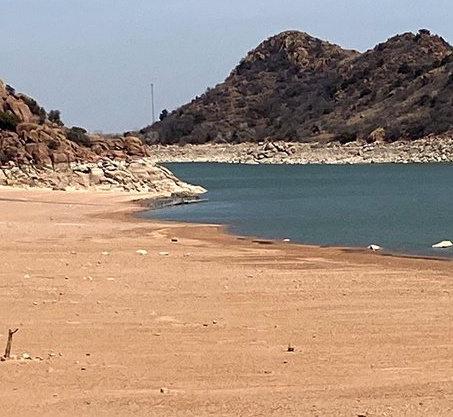
Blossoms
of the Drought
Photos and text by Sherry E Engler
The heavenly scent of the purple blooms wafted through the morning breeze, bringing me great pleasure and many, many smiles. Our irises were in full bloom; irises Dixie and I had worked hard to transfer. My young granddaughter, Dixie, and I had dug the flowers with bulbs up out of their original soil two summers ago when her parents were clearing their front yard to the landscape. Dixie, worked hard in the hot sun, helping me dig up the plants, placing them carefully in five-gallon buckets (we ended up with three) until we were satisfied we had them all. Even though summer is... Read More
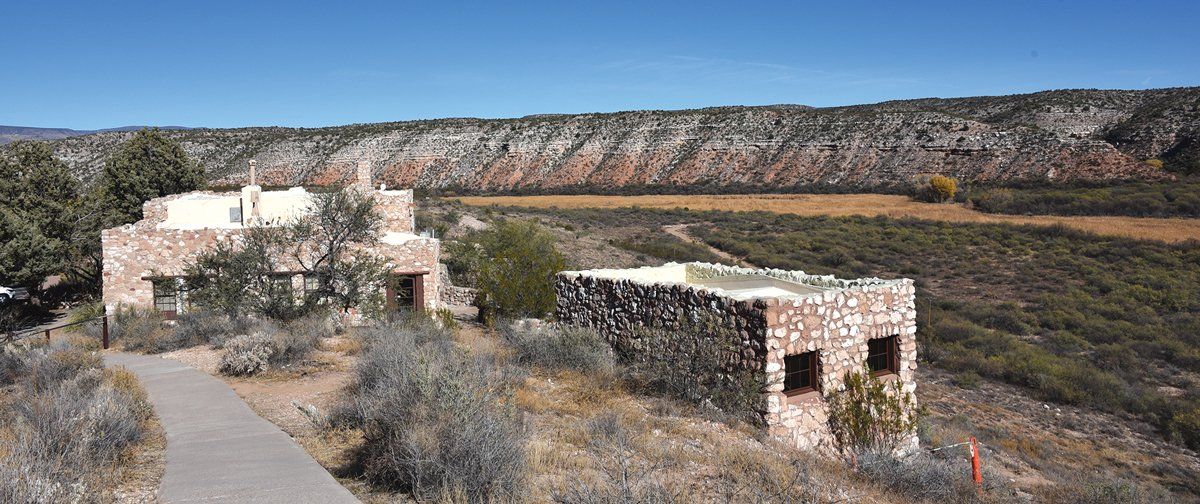
Tuzigoot
By Anne Groebner
“Tuzigoot” in Apache means “crooked water.” I’m sure it got its name because it sits overlooking the Verde River. I could see the immense structure from the Tuzigoot Bridge where I pulled my kayak out after paddling down from Lower Tapco River Access. Once I loaded my kayak into my truck, I ventured a few yards over to the visiter center and with my treasured “America the Beautiful” National Parks lifetime pass in hand, I set out to explore the ruins.
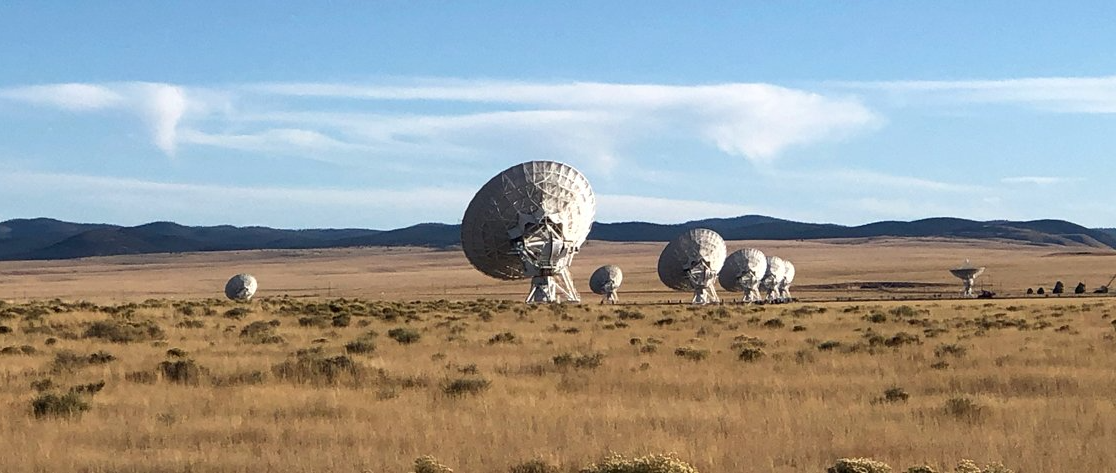
New Mexico:
Past & Future
By Sherry E Engler
Where did 2021 go? As we celebrate the New Year of 2022, it is customary to think of the progress we have traveled from our past and surmise with great anticipation where we would like to be in the future. Perhaps, this is just human nature. I believe in reviewing the past, we create a foundation from which to rise. I also believe in speculating the future, we gain excitement and eagerness to
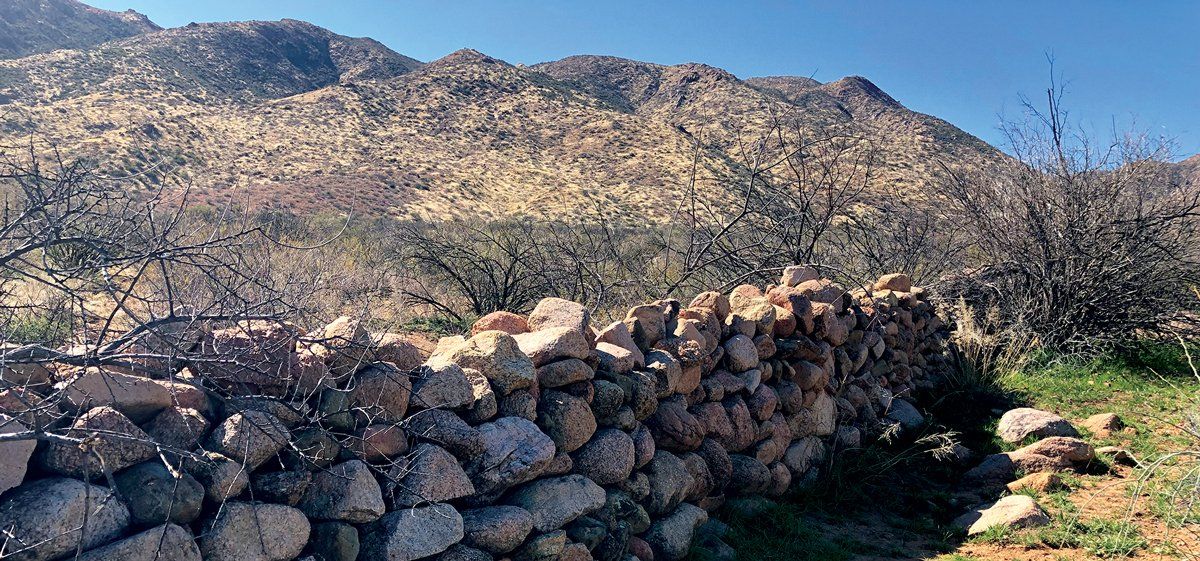
Roosevelt
Platform Mound
By Sherry Engler
The sunlight illuminates river boulders stacked with determination and purpose; these round boulders were stacked many, many years ago, perhaps at least seven hundred years ago as estimated by archaeologists. As I stand by the mound, existing of rock, desert plants, and soil, my mind drifts to a time in Tonto Basin when modern inventions were non-existent. Yet, READ MORE...
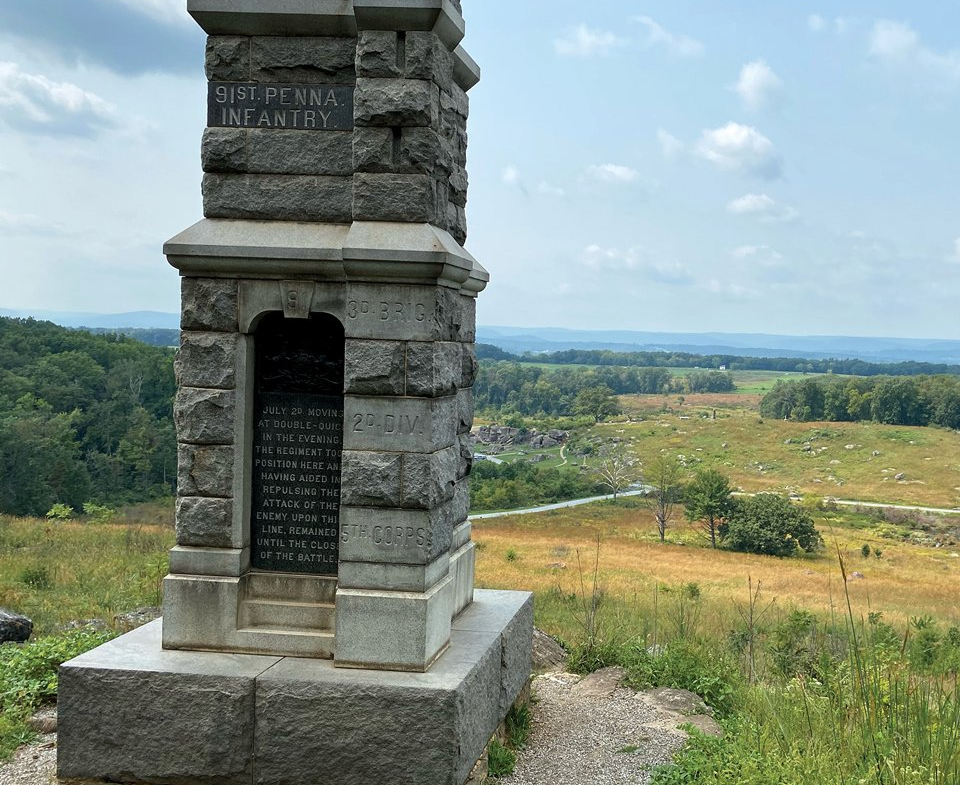
Rekindling American History
By Annemarie Eveland
I could hear the cheerful chirping birds and feel a gentle breeze wafting over me as I stood peacefully in the quiet morning. Warm sunlight streamed over the massive 6,000-acre field where I stood. These fields not so long ago had been the bitter struggle between the North and the South during the Civil War — this same
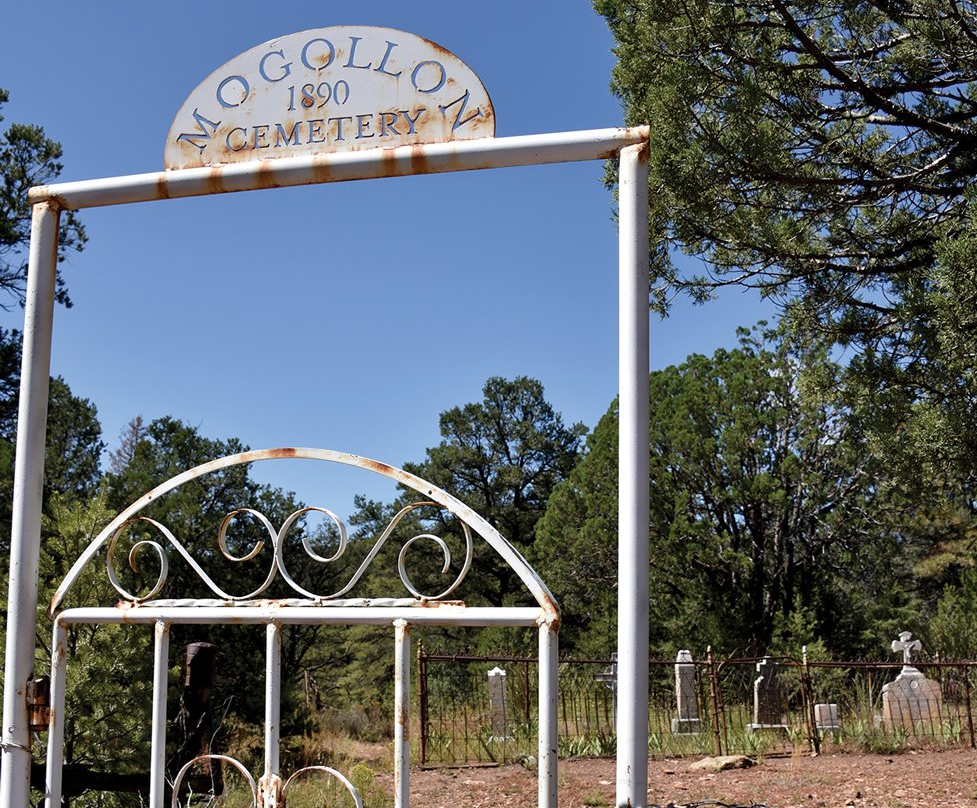
Old Trails and Ghostly Towns
Mogollon Ghost Town
By Anne Groebner
When I first visited the Catwalks (with long-time friend, Lee Nuzum), we also drove the harrowing, gravel road — seven-miles up to the small ghost town of Mogollon (properly pronounced moh-goh-Yohn, but pronounced MUGGY-own by the locals). Mogollon sits about...READ MORE

Fort Apache Historic Park
Fort Apache, a National Historic Landmark, is located at the confluence of the north and east forks of the White River. To stand on its grounds is to go back in time — more than 100 years. It once was the camp for the Army, who constructed 13 of the 27 existing buildings between 1871 and 1892. It is surrounded by incredible scenery which helped lead the military back then to choose this location. After the military’s
...READ MORE
Mysteries of
Black Mountain
PHOTO & TEXT BY SHERRY E ENGLER
A hike into the unknown, the mysterious and the unexplained describe my thoughts as we reached the top of the summit of 3,971 feet in Gila County, Arizona known by few as Black Mountain. Unlike more popular summits named Black Mountain, such as the mesa of Black
How I Met Wyatt Earp
PHOTO & TEXT
BY ANNEMARIE EVELAND
I sat down with “Wyatt Earp” in a room furnished with authentic period furniture from the time of the original Tombstone. “Wyatt” was suited in a full black period dress. It was a uniform that men worn then: a black frock coat or ¾ length Edwardian length coat with a wing collar shirt. And he
The Iconic Western Town Of Young, Arizona
PHOTOS AND TEXT BY SHERRY E ENGLER
Range wars, rowdy cowboys, gunfights, and cattle rustling once claimed the town of Pleasant Valley, known today as Young, Arizona. Father Time has progressed slowly in this small establishment of history, giving any adventurer a glimpse into the late 1800s. Young is truly a place
History's Graveyards
PHOTOS & TEXT BY ANNE GROEBNER
If you’ve ever visited a graveyard, did you wonder about the stories behind the person buried deep beneath that plot of earth — their last resting place? Who did they leave behind or what did they accomplish while they lived — or how did they die? I believe everyone has a story that they leave behind and the stories that people who lived in
"Best Night of
My Life" Rodeo
PHOTO & TEXT BY SHERRY E ENGLER
“Nothing like it!”
“Can’t get any better!”
“Love it!”
Perhaps, the thrills of rodeo are not describable in words -- even Cowboy Talltale has difficulty conveying sentiments of the heart when he describes his rodeo
Historical Check:
Bank of Bowie
BY SHERRY E ENGLER
Uncanny! What do Rambo, a military fort, pecans, pistachios and an old check dating back to 1929 have in common? A small -- an exceedingly small -- town in southeastern Arizona called Bowie.
A fortuitus gift -- a piece of history, a document signed in 1929 -- has plagued
Anasazi
The Ancient Ones
BY ELIZABETH HILL
I’m climbing the “Stairway to Heaven” at the Canyon de Chelly on the Navajo Reservation. Fitting my hands and feet into niches carved into the sheer cliff wall almost a millennium ago, I’m suddenly assailed with vertigo. “Don’t look down,” I tell myself. I focus on the sky above me and force my shaking arms and legs to hoist me another few inches. Finally,
Together We Serve
Stars & Striped Forever
BY SHERRY E ENGLER
RED: My heart beats strong with pride every time I see the red stripes in our great United States of America flag wave over the land of the free. Representing the blood shed of the brave heroes who bled on battle fields, died in the waters of war and sacrificed their freedoms for ours, the RED is a momentous color depicting the grit of our great nation.
The Hashknife
Pony Express
TEXT & PHOTO BY ANNEMARIE EVELAND
It started with a knife. Not just any ordinary knife. It was the Hash Knife. The tool chuck wagon cooks used to slash up the meat for hash recipes.
A practical tool that was later adopted as the brand for the Aztec Land and Cattle Company out of Texas, more famously known as the Hashknife Outfit as their brand looked like the old hash knife.
snuG owT
BY ELIZABETH HILL
Years ago, my mother took a road trip along the southwest portion of Route 66. As was the fashion of the day, she took a number of slides to later share her adventure with friends and family. As we ate popcorn and sipped cokes, we were regaled with pictures of the painted desert, the petrified forest, the wigwam motel, the meteor crater
White Mountain Heritage:
Understanding Your Place
Tribal experts and heritage professionals offer views on treating our ancient places with respect.
By - Stacy L. Ryan,
Archaeology Southwest
Since the 1960s, our White Mountain region has become a recreation paradise. The same region has been home to Native peoples for some 10,000 years. Over those
Once Upon a Time in the
Northeastern Mountains of Arizona
BY ANNE GROEBNER
With Jim Warren, oldest grandson of James G. McNary and
Diana Butler, granddaughter of James G. McNary.
A few miles south of Pinetop is a sleepy little town called McNary which lies on the dividing line of Apache and Navajo Counties within the White Mountain Apache Reservation. It is a town that has an incredible and, to many, an unbelievable history. If you are a skier and you are heading to Sunrise Ski Park this year, you will
Once Upon a Time in the
Northeastern Mountains of Arizona
PART II
BY ANNE GROEBNER
It’s been almost 95 years since James G. McNary and William Cady drove their 1920’s motor car from El Paso, Texas to check out the giant yellow pine, called Ponderosa, in Cooley, Arizona — a town that was transformed from a small logging camp to the town of McNary —then a thriving economic center of the White Mountains. The town of McNary is still there, having survived its


